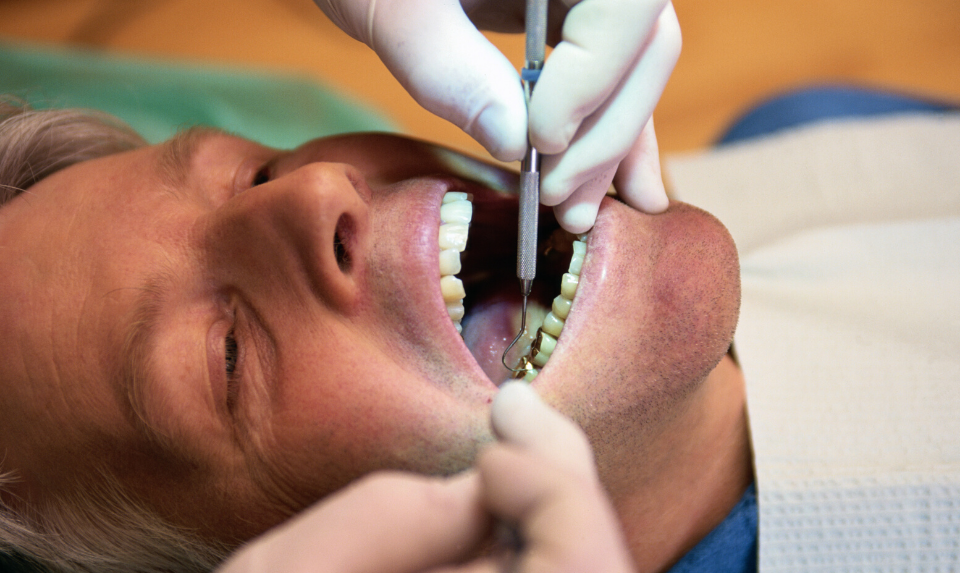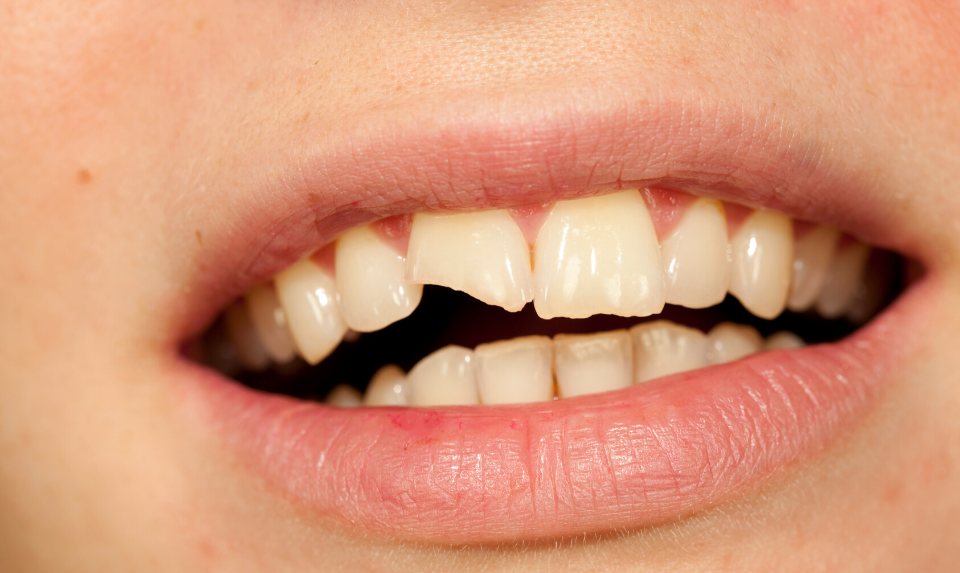A cracked tooth may result from chewing on hard food, grinding your teeth at night-time, and can even happen as expected as you age. It’s a frequent condition and the leading cause of tooth loss in developed nations.

Causes of a Cracked Tooth
Teeth crack because of an array of issues, counting:
- a force from teeth grinding
- fillings so large they deteriorate the integrity of the tooth
- chewing or biting hard food, for instance, ice, nuts, or hard candy
- blows to the mouth, such as with a car accident, sporting damage, fall, or even a fight
- sudden changes in temperature in the mouth — for instance, from eating something tremendously hot and then trying to cool your mouth with ice water
- age, with most teeth, cracks happening in people over 50
Types of Cracked Teeth
Cracks can appear as:
- Craze lines. These are small cracks in the enamel (the strong outer covering) of teeth. They cause no pain and don’t need any treatment.
- Fractured cusp. This type of crack usually occurs around a dental filling. It typically doesn’t concern the pulp of the tooth (the soft centre of the tooth where nerves, connective tissue, and blood vessels are) and as a consequence doesn’t cause much pain.
- Cracks connected to the gum line. A tooth that has a perpendicular crack that extends through it but hasn’t yet reached the gum line is usually saveable. Yet, if the crack extends into the gum line, that tooth might have to be extracted. On time treatment gives the best possibility of saving the tooth.
- Split tooth. This is a tooth with a crack that travels from its exterior to below the gum line. It can, in fact, be split into two segments. With such a wide crack, it’s improbable the whole tooth can be saved, but your dentist may be able to save a part of it.
- Straight up root fracture. This type of crack begins below the gum line and travels upward. It frequently doesn’t create much in the way of symptoms, unless the tooth becomes contaminated. Chances are the tooth needs to be extracted.
Symptoms of a Cracked Tooth
Not every cracked tooth will create symptoms. But when it does, familiar ones include:
- pain when chewing or biting, particularly when you release the bite
- sensitivity to heat, cold, or sugariness
- pain that comes and goes, but not often constant
- inflammation of the gum around the affected tooth
Diagnosing a Cracked Tooth
X-rays don’t also expose a cracked tooth, and not everybody has distinctive symptoms. To help diagnose a cracked tooth, your dentist will most likely do the following:
- Ask about your dental history, such as whether you chew up on a lot of hard foods or pound your teeth.
- Make an ocular examination. Your doctor may need to use a magnifying lens to see small cracks.
- Feel for the crack. Your dentist may run a dental surveyor over and around the tooth to notice if it “catches” on an edge.
- Use a dental dye, which can make the crack be obvious.
- Look into your gums looking for swelling. This method is especially helpful in identifying vertical cracks, which can irritate gums.
- X-ray your teeth. While this won’t essentially make known the crack, it can point out poor pulp health, which can point out a crack is there.
- Have you bite down on something. If you contain a cracked tooth, you may feel pain when you let go of your bite.
Treatment for a Cracked Tooth
Handling depends on the size of the crack, where it’s to be found, your symptoms, and whether the crack extends into the gum line. Depending on those factors, your dentist may advise one of the following:
Bonding
In this process, your doctor uses a plastic resin to fill up the crack, restoring its look and purpose.
Crown
A dental crown is a prosthetic device typically made of porcelain or ceramic. It fits over the broken tooth or caps it.
To fit a crown, your dentist initial shaves off some enamel from your tooth to create room for the crown in your mouth. They then make a notion of the tooth, decide on a colour that matches your teeth, and send the notion off to a dental lab to create the crown.
This procedure may take a couple of weeks. When the crown returns, your dentist fits and cements it over your fractured tooth.
With advances in technology, some dentists can mill a porcelain crown right in the office and place it that day.
With appropriate care, a crown can last a lifetime.
Root Canal

When a fracture is so extensive it extends into the pulp, your dentist, or a specialist such as an oral surgeon or endodontist, will advise a root canal to get rid of damaged pulp and bring back some integrity to the tooth. This process can thwart the tooth from becoming contaminated or deteriorating further.
Extraction
When the formation of the tooth, and the nerves and roots that lie below it, are very damaged, removing the tooth possibly is the only alternative.
No Treatment
Numerous people have tiny, hairline cracks in the enamel of their teeth. If these cracks don’t change the appearance and don’t generate pain, your doctor may recommend leaving them alone.
If you think you’ve cracked a tooth, wash with warm water to clean your mouth and use a cold compress on the outside of your cheek to stop inflammation. Anti-inflammatory painkillers, like ibuprofen (Advil, Motrin IB), can decrease swelling and pain. And make a date to see your dentist as soon as possible. Delaying action puts your mouth at even larger risk.

I am a Family Doctor in Atlanta, GA. Married to the beautiful, Susan with two sweet girls. I enjoy golfing on occasion.
You might be wondering what my domain name has to do with my profession. About three years ago, my uncle, who has many domains, created this one to help others buy a knock-off brand of sports sunglasses.
I mentioned to him that I have been domain searching and was in need of finding a way to bring information to the public regarding my family medicine practice. He was kind enough to give me the rights to own this one. I realized that creating this site benefits society in various ways by showing the many options available to relieve family stress and worry via modern medicine.
